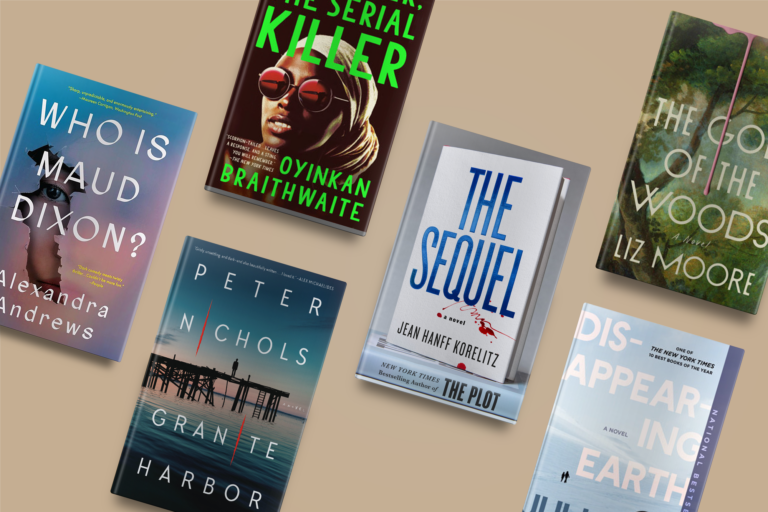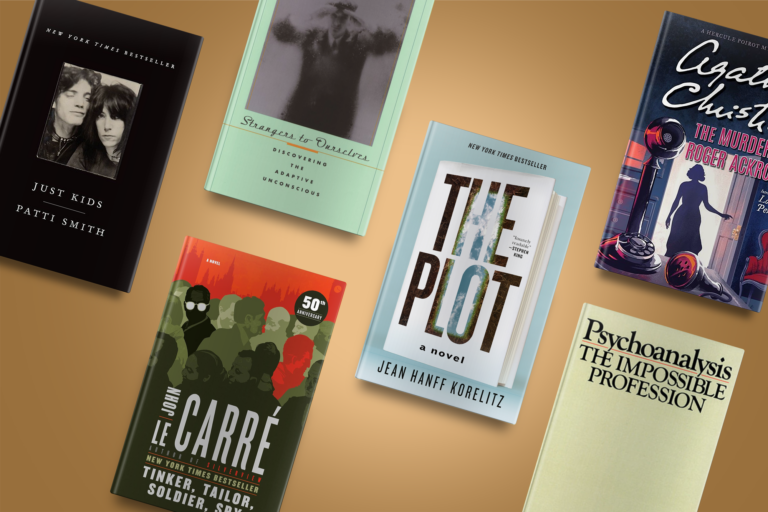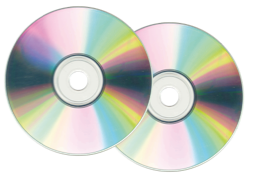Definition of Biography
A biography is the non- fiction , written history or account of a person’s life. Biographies are intended to give an objective portrayal of a person, written in the third person. Biographers collect information from the subject (if he/she is available), acquaintances of the subject, or in researching other sources such as reference material, experts, records, diaries, interviews, etc. Most biographers intend to present the life story of a person and establish the context of their story for the reader, whether in terms of history and/or the present day. In turn, the reader can be reasonably assured that the information presented about the biographical subject is as true and authentic as possible.
Biographies can be written about a person at any time, no matter if they are living or dead. However, there are limitations to biography as a literary device. Even if the subject is involved in the biographical process, the biographer is restricted in terms of access to the subject’s thoughts or feelings.
Biographical works typically include details of significant events that shape the life of the subject as well as information about their childhood, education, career, and relationships. Occasionally, a biography is made into another form of art such as a film or dramatic production. The musical production of “Hamilton” is an excellent example of a biographical work that has been turned into one of the most popular musical productions in Broadway history.

Common Examples of Biographical Subjects
Most people assume that the subject of a biography must be a person who is famous in some way. However, that’s not always the case. In general, biographical subjects tend to be interesting people who have pioneered something in their field of expertise or done something extraordinary for humanity. In addition, biographical subjects can be people who have experienced something unusual or heartbreaking, committed terrible acts, or who are especially gifted and/or talented.
As a literary device, biography is important because it allows readers to learn about someone’s story and history. This can be enlightening, inspiring, and meaningful in creating connections. Here are some common examples of biographical subjects:
- political leaders
- entrepreneurs
- historical figures
- serial killers
- notorious people
- political activists
- adventurers/explorers
- religious leaders
- military leaders
- cultural figures
Famous Examples of Biographical Works
The readership for biography tends to be those who enjoy learning about a certain person’s life or overall field related to the person. In addition, some readers enjoy the literary form of biography independent of the subject. Some biographical works become well-known due to either the person’s story or the way the work is written, gaining a readership of people who may not otherwise choose to read biography or are unfamiliar with its form.
Here are some famous examples of biographical works that are familiar to many readers outside of biography fans:
- Alexander Hamilton (Ron Chernow)
- Prairie Fires: The American Dreams of Laura Ingalls Wilder (Caroline Fraser)
- Steve Jobs (Walter Isaacson)
- Churchill: A Life (Martin Gilbert)
- The Professor and the Madman: A Tale of Murder, Insanity, and the Making of the Oxford English Dictionary (Simon Winchester)
- A Beautiful Mind (Sylvia Nasar)
- The Black Rose (Tananarive Due)
- John Adams (David McCullough)
- Into the Wild ( Jon Krakauer )
- John Brown (W.E.B. Du Bois)
- Frida: A Biography of Frida Kahlo (Hayden Herrera)
- The Immortal Life of Henrietta Lacks (Rebecca Skloot)
- Team of Rivals: The Political Genius of Abraham Lincoln (Doris Kearns Goodwin)
- Shirley Jackson : A Rather Haunted Life ( Ruth Franklin)
- the stranger in the Woods: The Extraordinary Story of the Last True Hermit (Michael Finkel)
Difference Between Biography, Autobiography, and Memoir
Biography, autobiography , and memoir are the three main forms used to tell the story of a person’s life. Though there are similarities between these forms, they have distinct differences in terms of the writing, style , and purpose.
A biography is an informational narrative and account of the life history of an individual person, written by someone who is not the subject of the biography. An autobiography is the story of an individual’s life, written by that individual. In general, an autobiography is presented chronologically with a focus on key events in the person’s life. Since the writer is the subject of an autobiography, it’s written in the first person and considered more subjective than objective, like a biography. In addition, autobiographies are often written late in the person’s life to present their life experiences, challenges, achievements, viewpoints, etc., across time.
Memoir refers to a written collection of a person’s significant memories, written by that person. Memoir doesn’t generally include biographical information or chronological events unless it’s relevant to the story being presented. The purpose of memoir is reflection and an intention to share a meaningful story as a means of creating an emotional connection with the reader. Memoirs are often presented in a narrative style that is both entertaining and thought-provoking.
Examples of Biography in Literature
An important subset of biography is literary biography. A literary biography applies biographical study and form to the lives of artists and writers. This poses some complications for writers of literary biographies in that they must balance the representation of the biographical subject, the artist or writer, as well as aspects of the subject’s literary works. This balance can be difficult to achieve in terms of judicious interpretation of biographical elements within an author’s literary work and consideration of the separate spheres of the artist and their art.
Literary biographies of artists and writers are among some of the most interesting biographical works. These biographies can also be very influential for readers, not only in terms of understanding the artist or writer’s personal story but the context of their work or literature as well. Here are some examples of well-known literary biographies:
Example 1: Savage Beauty: The Life of Edna St. Vincent Millay (Nancy Milford)
One of the first things Vincent explained to Norma was that there was a certain freedom of language in the Village that mustn’t shock her. It wasn’t vulgar. ‘So we sat darning socks on Waverly Place and practiced the use of profanity as we stitched. Needle in, . Needle out, piss. Needle in, . Needle out, c. Until we were easy with the words.’
This passage reflects the way in which Milford is able to characterize St. Vincent Millay as a person interacting with her sister. Even avid readers of a writer’s work are often unaware of the artist’s private and personal natures, separate from their literature and art. Milford reflects the balance required on the part of a literary biographer of telling the writer’s life story without undermining or interfering with the meaning and understanding of the literature produced by the writer. Though biographical information can provide some influence and context for a writer’s literary subjects, style, and choices , there is a distinction between the fictional world created by a writer and the writer’s “real” world. However, a literary biographer can illuminate the writer’s story so that the reader of both the biography and the biographical subject’s literature finds greater meaning and significance.
Example 2: The Invisible Woman: The Story of Nelly Ternan and Charles Dickens (Claire Tomalin)
The season of domestic goodwill and festivity must have posed a problem to all good Victorian family men with more than one family to take care of, particularly when there were two lots of children to receive the demonstrations of paternal love.
Tomalin’s literary biography of Charles Dickens reveals the writer’s extramarital relationship with a woman named Nelly Ternan. Tomalin presents the complications that resulted for Dickens from this relationship in terms of his personal and family life as well as his professional writing and literary work. Revealing information such as an extramarital relationship can influence the way a reader may feel about the subject as a person, and in the case of literary biography it can influence the way readers feel about the subject’s literature as well. Artists and writers who are beloved , such as Charles Dickens, are often idealized by their devoted readers and society itself. However, as Tomalin’s biography of Dickens indicates, artists and writers are complicated and as subject to human failings as anyone else.
Example 3: Virginia Woolf (Hermione Lee)
‘A self that goes on changing is a self that goes on living’: so too with the biography of that self. And just as lives don’t stay still, so life-writing can’t be fixed and finalised. Our ideas are shifting about what can be said, our knowledge of human character is changing. The biographer has to pioneer, going ‘ahead of the rest of us, like the miner’s canary, testing the atmosphere , detecting falsity, unreality, and the presence of obsolete conventions’. So, ‘There are some stories which have to be retold by each generation’. She is talking about the story of Shelley, but she could be talking about her own life-story.
In this passage, Lee is able to demonstrate what her biographical subject, Virginia Woolf, felt about biography and a person telling their own or another person’s story. Literary biographies of well-known writers can be especially difficult to navigate in that both the author and biographical subject are writers, but completely separate and different people. As referenced in this passage by Lee, Woolf was aware of the subtleties and fluidity present in a person’s life which can be difficult to judiciously and effectively relay to a reader on the part of a biographer. In addition, Woolf offers insight into the fact that biographers must make choices in terms of what information is presented to the reader and the context in which it is offered, making them a “miner’s canary” as to how history will view and remember the biographical subject.

Post navigation
What Is a Biography?

Learning from the experiences of others is what makes us human.
At the core of every biography is the story of someone’s humanity. While biographies come in many sub-genres, the one thing they all have in common is loyalty to the facts, as they’re available at the time. Here’s how we define biography, a look at its origins, and some popular types.
“Biography” Definition
A biography is simply the story of a real person’s life. It could be about a person who is still alive, someone who lived centuries ago, someone who is globally famous, an unsung hero forgotten by history, or even a unique group of people. The facts of their life, from birth to death (or the present day of the author), are included with life-changing moments often taking center stage. The author usually points to the subject’s childhood, coming-of-age events, relationships, failures, and successes in order to create a well-rounded description of her subject.
Biographies require a great deal of research. Sources of information could be as direct as an interview with the subject providing their own interpretation of their life’s events. When writing about people who are no longer with us, biographers look for primary sources left behind by the subject and, if possible, interviews with friends or family. Historical biographers may also include accounts from other experts who have studied their subject.
The biographer’s ultimate goal is to recreate the world their subject lived in and describe how they functioned within it. Did they change their world? Did their world change them? Did they transcend the time in which they lived? Why or why not? And how? These universal life lessons are what make biographies such a meaningful read.
Origins of the Biography
Greco-Roman literature honored the gods as well as notable mortals. Whether winning or losing, their behaviors were to be copied or seen as cautionary tales. One of the earliest examples written exclusively about humans is Plutarch’s Parallel Lives (probably early 2 nd century AD). It’s a collection of biographies in which a pair of men, one Greek and one Roman, are compared and held up as either a good or bad example to follow.
In the Middle Ages, Einhard’s The Life of Charlemagne (around 817 AD) stands out as one of the most famous biographies of its day. Einhard clearly fawns over Charlemagne’s accomplishments throughout, yet it doesn’t diminish the value this biography has brought to centuries of historians since its writing.
Considered the earliest modern biography, The Life of Samuel Johnson (1791) by James Boswell looks like the biographies we know today. Boswell conducted interviews, performed years of research, and created a compelling narrative of his subject.
The genre evolves as the 20th century arrives, and with it the first World War. The 1920s saw a boom in autobiographies in response. Robert Graves’ Good-Bye to All That (1929) is a coming-of age story set amid the absurdity of war and its aftermath. That same year, Mahatma Gandhi wrote The Story of My Experiments with Truth , recalling how the events of his life led him to develop his theories of nonviolent rebellion. In this time, celebrity tell-alls also emerged as a popular form of entertainment. With the horrors of World War II and the explosion of the civil rights movement, American biographers of the late 20 th century had much to archive. Instantly hailed as some of the best writing about the war, John Hersey’s Hiroshima (1946) tells the stories of six people who lived through those world-altering days. Alex Haley wrote the as-told-to The Autobiography of Malcom X (1965). Yet with biographies, the more things change, the more they stay the same. One theme that persists is a biographer’s desire to cast its subject in an updated light, as in Eleanor and Hick: The Love Affair that Shaped a First Lady by Susan Quinn (2016).
Types of Biographies
Contemporary Biography: Authorized or Unauthorized
The typical modern biography tells the life of someone still alive, or who has recently passed. Sometimes these are authorized — written with permission or input from the subject or their family — like Dave Itzkoff’s intimate look at the life and career of Robin Williams, Robin . Unauthorized biographies of living people run the risk of being controversial. Kitty Kelley’s infamous His Way: The Unauthorized Biography of Frank Sinatra so angered Sinatra, he tried to prevent its publication.
Historical Biography
The wild success of Lin-Manuel Miranda’s Hamilton is proof that our interest in historical biography is as strong as ever. Miranda was inspired to write the musical after reading Ron Chernow’s Alexander Hamilton , an epic 800+ page biography intended to cement Hamilton’s status as a great American. Paula Gunn Allen also sets the record straight on another misunderstood historical figure with Pocahontas: Medicine Woman, Spy, Entrepreneur, Diplomat , revealing details about her tribe, her family, and her relationship with John Smith that are usually missing from other accounts. Historical biographies also give the spotlight to people who died without ever getting the recognition they deserved, such as The Immortal Life of Henrietta Lacks .
Biography of a Group
When a group of people share unique characteristics, they can be the topic of a collective biography. The earliest example of this is Captain Charles Johnson’s A General History of the Pirates (1724), which catalogs the lives of notorious pirates and establishes the popular culture images we still associate with them. Smaller groups are also deserving of a biography, as seen in David Hajdu’s Positively 4th Street , a mesmerizing behind-the-scenes look at the early years of Bob Dylan, Joan Baez, Mimi Baez Fariña, and Richard Fariña as they establish the folk scene in New York City. Likewise, British royal family fashion is a vehicle for telling the life stories of four iconic royals – Queen Elizabeth II, Diana, Kate, and Meghan – in HRH: So Many Thoughts on Royal Style by style journalist Elizabeth Holmes.
Autobiography
This type of biography is written about one’s self, spanning an entire life up to the point of its writing. One of the earliest autobiographies is Saint Augustine’s The Confessions (400), in which his own experiences from childhood through his religious conversion are told in order to create a sweeping guide to life. Maya Angelou’s I Know Why the Caged Bird Sings is the first of six autobiographies that share all the pain of her childhood and the long road that led to her work in the civil rights movement, and a beloved, prize-winning writer.
Memoirs are a type of autobiography, written about a specific but vital aspect of one’s life. In Toil & Trouble , Augusten Burroughs explains how he has lived his life as a witch. Mikel Jollett’s Hollywood Park recounts his early years spent in a cult, his family’s escape, and his rise to success with his band, The Airborne Toxic Event. Barack Obama’s first presidential memoir, A Promised Land , charts his path into politics and takes a deep dive into his first four years in office.
Fictional Biography
Fictional biographies are no substitute for a painstakingly researched scholarly biography, but they’re definitely meant to be more entertaining. Z: A Novel of Zelda Fitzgerald by Therese Anne Fowler constructs Zelda and F. Scott’s wild, Jazz-Age life, told from Zelda’s point of view. The Only Woman in the Room by Marie Benedict brings readers into the secret life of Hollywood actress and wartime scientist, Hedy Lamarr. These imagined biographies, while often whimsical, still respect the form in that they depend heavily on facts when creating setting, plot, and characters.
Share with your friends
Related articles, how to write a query letter.

11 Captivating Literary Thrillers

10 Illuminating Novels and Non-Fiction Books Recommended by Malcolm Gladwell
Celadon delivered.
Subscribe to get articles about writing, adding to your TBR pile, and simply content we feel is worth sharing. And yes, also sign up to be the first to hear about giveaways, our acquisitions, and exclusives!
" * " indicates required fields

Step 1 of 8
Connect with
Sign up for our newsletter to see book giveaways, news, and more, get our newsletter.

IMAGES
VIDEO